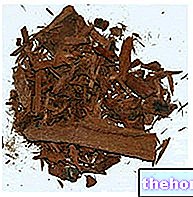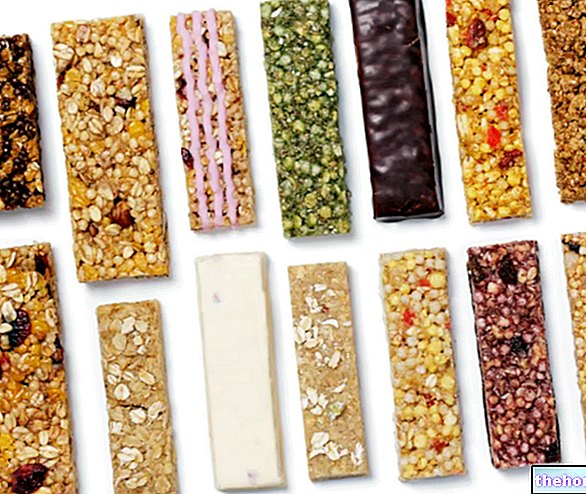
About Crea Max - Ultimate Nutrition
CREA / MAX - ULTIMATE NUTRITION
Food supplement based on creatine, glutamine and taurine.
FORMAT
Pack of 144 capsules
COMPOSITION
Creatine monohydrate
L-glutamine
L-Taurine
Capsule: food gelatin
Anti-caking agent: magnesium stearate
PER CAPSULE: Energy: Kcal 3 - Creatine monohydrate 333mg - L-glutamine 333mg - L-Taurine 333 mg
Creatine monohydrate - the most studied and characterized form, has more than 200 publications related to its effectiveness in sports and almost 2 decades of continuous use. Creatine monohydrate taken orally is absorbed in the intestine, recording a plasma peak 90 "after ingestion (for amounts of less than 10 grams). Through the circulatory stream, it reaches the muscular level, where through a cotransport with sodium, enhanced by the insulin action, it penetrates at the sarcoplasmic level. Here it is partially phosphorylated by creatine kinase into phosphocreatine, a key molecule in muscle energy metabolism. During the first minute of intense exercise, phosphocreatine can transfer its phosphoric group to ADP, allowing the synthesis of ATP and supporting muscle contraction. During this process, part of the available phosphocreatine undergoes non-enzymatic hydrolysis, with the consequent production of its inactive metabolite: creatinine. This is totally eliminated by the kidney, for about 2 grams per day: a portion that is recovered in part through endogenous synthesis, supported by amino acids such as arginine, glycine and methionine, in part through dietary intake (especially through meat). The pro-energetic muscle role makes this product one of the most used and most effective supplements for sports. The benefits demonstrated by its use are realized in:
- Improvement of maximum strength and power;
- Improvement of sub-maximal strength;
- Improvement of aerobic performance;
- Reduction of muscle fatigue;
- Improvement of body composition;
and probably also on the aerobic capacity of the athlete and on the protection of muscle tissue.
L-Taurine- molecule synthesized in the liver starting from sulfur amino acids such as methionine and cysteine, in the presence of vitamin B6. Commonly defined as a conditionally essential amino acid, it differs structurally and functionally from the other amino acids due to the absence of the carboxyl group, and to the lack of plastic and reconstructive capacity. Bile salts necessary for the correct digestion and absorption of lipids - also in the heart and muscles, where it regulates cellular hydrosaline homeostasis and protects the tissues from oxidative insult. It also forms part of the stabilization of cell membranes and the regulation of immune activity.
The daily requirement of taurine is generally satisfied both by the endogenously synthesized 400 mg and by the amount taken through the diet, in particular with foods of animal origin.
The numerous potentials of this molecule have led various researchers to experiment with its use in various pathological conditions, proving effective in protecting the body from cardiovascular risk, in improving the lipid profile, in assisting in the treatment of some neuronal and metabolic pathologies. still a defined therapeutic field of application.
In the sports field, taurine has found application in synergy with other energizing substances, such as caffeine and guarana, in supporting athletic and cognitive performance.
However, taurine is also used for purposes other than energizing, such as in an attempt to counteract the damage induced by intense physical activity, reducing markers of oxidative damage and preserving the integrity of the muscle structure.
L-Glutamine - produced mainly in the muscles, it represents the most abundant plasma amino acid. Its importance in balancing organic functions is essentially due to the function of carrier of amino groups, necessary to ensure proper detoxification from ammonia, and its disposal in the form of urea . As a carrier of amino groups, glutamine is also very important in anabolic processes, making amino groups available for protein synthesis processes based on tissue needs. In addition to its detoxifying role, glutamine is also essential for:
- Anabolic role, being part of the protein synthesis processes like all other amino acids;
- Energy role: as a precursor of glutamate and alpha-ketoglutarate it is part of both the krebs cycle and the gluconeogenic process;
- Modulatory role of the cell cycle: it represents one of the main energy sources for cells in active proliferation, such as those of the intestinal mucosa, and like those of the immune system;
- Excitatory role: crossing the blood-brain barrier, it reaches the neuronal level, where it is converted into glutamate, a neurotransmitter with an excitatory function;
- Antioxidant role: provides the glutamate used in the synthesis of glutathione.
Although glutamine is generally considered a NON essential amino acid, there are some conditions, mostly pathological, which, by significantly increasing the demand for this amino acid, require specific integration. Burns, severe trauma, chronic and infectious diseases, and cancer, are just some of the aforementioned conditions, for which, however, a therapeutic protocol based on glutamine has not yet been standardized, given the somewhat conflicting results. In addition to the aforementioned pathological conditions, there is another "situation in which the demand for glutamine becomes more intense: physical exercise." Amino acid oxidation, which occurs above all in endurance sports, induces a significant increase in nitrogen compounds, with the consequent activation of all those detoxification systems necessary to protect the organism from ammonia toxicity. there is precisely glutamine, whose prolonged decline will be accompanied by a syndrome known as overtraining syndrome, characterized by immune deficiencies, asthenia, chronic fatigue and recurrent infections. Supplementation with glutamine in sports, therefore, is part of the prevention processes of overtraining, and potentially improvements in detoxification systems.
Product features Crea Max - Ultimate Nutrition
The particular formulation of this product was created with the aim of balancing muscle functions. Creatine and glutamine, in fact, should support - as also documented by some scientific works - the increase in maximum strength and the improvement of body composition, while taurine should protect the muscle from the oxidative insult induced by intense physical exercise, which inevitably affects the contractile and functional capacity of the muscles.
In support of these hypotheses there is only one study, which shows how supplementation with 0.3 g of creatine per kg of body weight for the first week, followed by 0.03 g / kg for the following 7 weeks, in conjunction with 4 g / day of glutamine, guaranteed an increase in lean mass and strength compared to the group supplemented with creatine alone.Method of use recommended by the company - Crea Max - Ultimate Nutrition
It is recommended to take 1 capsule per day.
Directions for use in sports Crea Max - Ultimate Nutrition
Also in this case it is very difficult to suggest an effective dosage, given the small amount of scientific work. Furthermore, it must be considered that the three elements are equally distributed in the capsule, therefore it would be necessary to find the correct compromise between all the active ingredients in question.
The 2 grams per day for a single element, which requires 6 capsules / day, seems to be the best compromise between the three products, without having to resort to other supplements.
It would be preferable to take it before training, with a source of simple sugars (for example with fruit juice) in such a way as to facilitate the uptake of creatine and glutamine.
Crea Max Side Effects - Ultimate Nutrition
Various studies agree that creatine supplementation in healthy individuals is safe. In particular, studies relating to chronic (3-5 gr / day for a year) and acute (20 gr / day for a week) supplementation do not show any effects. particular collateral.
However, it should be remembered that the ingestion of too high or poorly solubilized doses could be accompanied by abdominal cramps, nausea, vomiting and diarrhea, as well as chronic administration, especially if carried out in conjunction with high-protein diets could significantly increase the renal load.
Finally, even if it does not represent a real side effect, it must be considered that the increase in weight resulting from the accumulation of water inside the cell could have a negative impact on performance.
Taurine: The side effects of this substance are not yet well documented, which seems to be safe at a dose of 3 grams per day.
However, cases of hypertension are documented
At high doses, nausea, vomiting, fatigue, migraine were found.
Glutamine: several studies have experimented with supplementation with oral glutamine doses even higher than 20 grams, without recording any particular side effect.
A single long-term study, with athletes taking 28g daily doses for 2 weeks, distributed in 4 different intakes, found no side effects.
Precautions for use Crea Max - Ultimate Nutrition
The product is contraindicated in cases of renal or hepatic pathology, cardiovascular disease and / or hypertension, during pregnancy, during lactation and under the age of 12 and adolescents not yet formed.
In case of prolonged use (over 6/8 weeks) the doctor's opinion is necessary.
This article, elaborated on the critical rereading of scientific articles, university texts and common practice, is for information purposes only and therefore has no medical prescription value. It is therefore always required to consult your doctor, nutritionist or pharmacist before undertaking the use of any supplement.. Learn more about Crea Max's critical analysis - Ultimate Nutrition.
BIBLIOGRAPHY
The effects of 8 weeks of creatine monohydrate and glutamine supplementation on body composition and performance measures.
Lehmkuhl M, Malone M, Justice B, Trone G, Pistilli E, Vinci D, Haff EE, Kilgore JL, Haff GG.
J Strength Cond Res. 2003 Aug; 17: 425-38.
Int J Sport Nutr Exerc Metab. 2006 Aug; 16: 430-46.
Hoffman J, Ratamess N, Kang J, Mangine G, Faigenbaum A, Stout J.
Rejuvenation Res. 2008 Jun; 11: 641-7.
Derave W, Jones G, Hespel P, Harris RC.
J Int Soc Sports Nutr. 2009 Feb 19; 6: 6.
Spillane M, Schoch R, Cooke M, Harvey T, Greenwood M, Kreider R, Willoughby DS.
http://www.sportmedicina.com/creatina.htm
Ergogenic effects of creatine in sports and rehabilitation.
Hespel P, Derave W.
Subcell Biochem. 2007; 46: 245-59. Review.
J Nutr Health Aging. 2010; 14: 155-9.
The effects of supplementation with creatine and protein on muscle strength following a traditional resistance training program in middle-aged and older men.
Bemben MG, Witten MS, Carter JM, Eliot KA, Knehans AW, Bemben DA.
J Int Soc Sports Nutr. 2009 Nov 12; 6: 18.
Graef JL, Smith AE, Kendall KL, Fukuda DH, Moon JR, Beck TW, Cramer JT, Stout JR.
Med Sci Sports Exerc. 2009 Sep 2. [Epub ahead of print]
Bazzucchi I, Felici F, Sacchetti M.
Effects of four weeks of high-intensity interval training and creatine supplementation on critical power and anaerobic working capacity in college-aged men.
Kendall KL, Smith AE, Graef JL, Fukuda DH, Moon JR, Beck TW, Cramer JT, Stout JR.
J Strength Cond Res. 2009 Sep; 23: 1663-9.
Creatine supplementation enhances muscle force recovery after eccentrically-induced muscle damage in healthy individuals.
Cooke MB, Rybalka E, Williams AD, Cribb PJ, Hayes A.
J Int Soc Sports Nutr. 2009 Jun 2; 6: 13.
Int J Sport Nutr Exerc Metab. 2009 Feb; 19: 79-96.
Conjugated linoleic acid combined with creatine monohydrate and whey protein supplementation during strength training.Cornish SM, Candow DG, Jantz NT, Chilibeck PD, Little JP, Forbes S, Abeysekara S, Zello GA.
J Strength Cond Res. 2009 May; 23: 818-26.
Herda TJ, Beck TW, Ryan ED, Smith AE, Walter AA, Hartman MJ, Stout JR, Cramer JT.
Effects of creatine monohydrate and polyethylene glycosylated creatine supplementation on muscular strength, endurance, and power output.Herda TJ, Beck TW, Ryan ED, Smith AE, Walter AA, Hartman MJ, Stout JR, Cramer JT.
Int J Sport Nutr Exerc Metab. 2008 Aug; 18: 389-98.
Burke DG, Candow DG, Chilibeck PD, MacNeil LG, Roy BD, Tarnopolsky MA, Ziegenfuss T.
Physiol Behav. 2008 Sep 3; 95 (1-2): 130-4. Epub 2008 May 15.
Rawson ES, Lieberman HR, Walsh TM, Zuber SM, Harhart JM, Matthews TC.
J Int Soc Sports Nutr. 2006 Jun 23; 3: 60-6.
Schoch RD, Willoughby D, Greenwood M.
http://www.ncbi.nlm.nih.gov/pmc/articles/PMC2129152/?tool=pubmed
J Int Soc Sports Nutr. 2008 Feb 13; 5: 4.
Jäger R, Metzger J, Lautmann K, Shushakov V, Purpura M, Geiss KR, Maassen N.
Creatine supplementation does not reduce muscle damage or enhance recovery from resistance exercise.
Rawson ES, Conti MP, Miles MP.
J Strength Cond Res. 2007 Nov; 21: 1208-13.
J Nutr Health Aging. 2007 Nov-Dec; 11: 459-64.
Stout JR, Sue Graves B, Cramer JT, Goldstein ER, Costa PB, Smith AE, Walter AA.
Appl Physiol Nutr Metab. 2007 Dec; 32: 1052-7.
Chilibeck PD, Magnus C, Anderson M.
Clin Sci (Lond). 1992 Sep; 83: 367-74.
Harris RC, Söderlund K, Hultman E.
Br J Sports Med. 1996 Sep; 30: 222-5.
Thompson CH, Kemp GJ, Sanderson AL, Dixon RM, Styles P, Taylor DJ, Radda GK.
J Appl Physiol. 1996 Jul; 81: 232-7.
Hultman E, Söderlund K, Timmons JA, Cederblad G, Greenhaff PL.
Int J Sport Nutr. 1995 Jun; 5: 94-101.
Maughan RJ.
Med Sci Sports Exerc. 1998 Jan; 30: 73-82.
Kreider RB, Ferreira M, Wilson M, Grindstaff P, Plisk S, Reinardy J, Cantler E, Almada AL.
Subcell Biochem. 2007; 46: 275-89.
Persky AM, Rawson ES.
Int J Sports Physiol Perform. 2006 Dec; 1: 311-23.
Francaux M, Poortmans JR.
Regul Toxicol Pharmacol. 2006 Aug; 45: 242-51. Epub 2006 Jun 30.
Shao A, Hathcock JN.
Am J Physiol. 1996 Nov; 271 (5 Pt 1): E821-6.
Green AL, Hultman E, Macdonald IA, Sewell DA, Greenhaff PL.




























